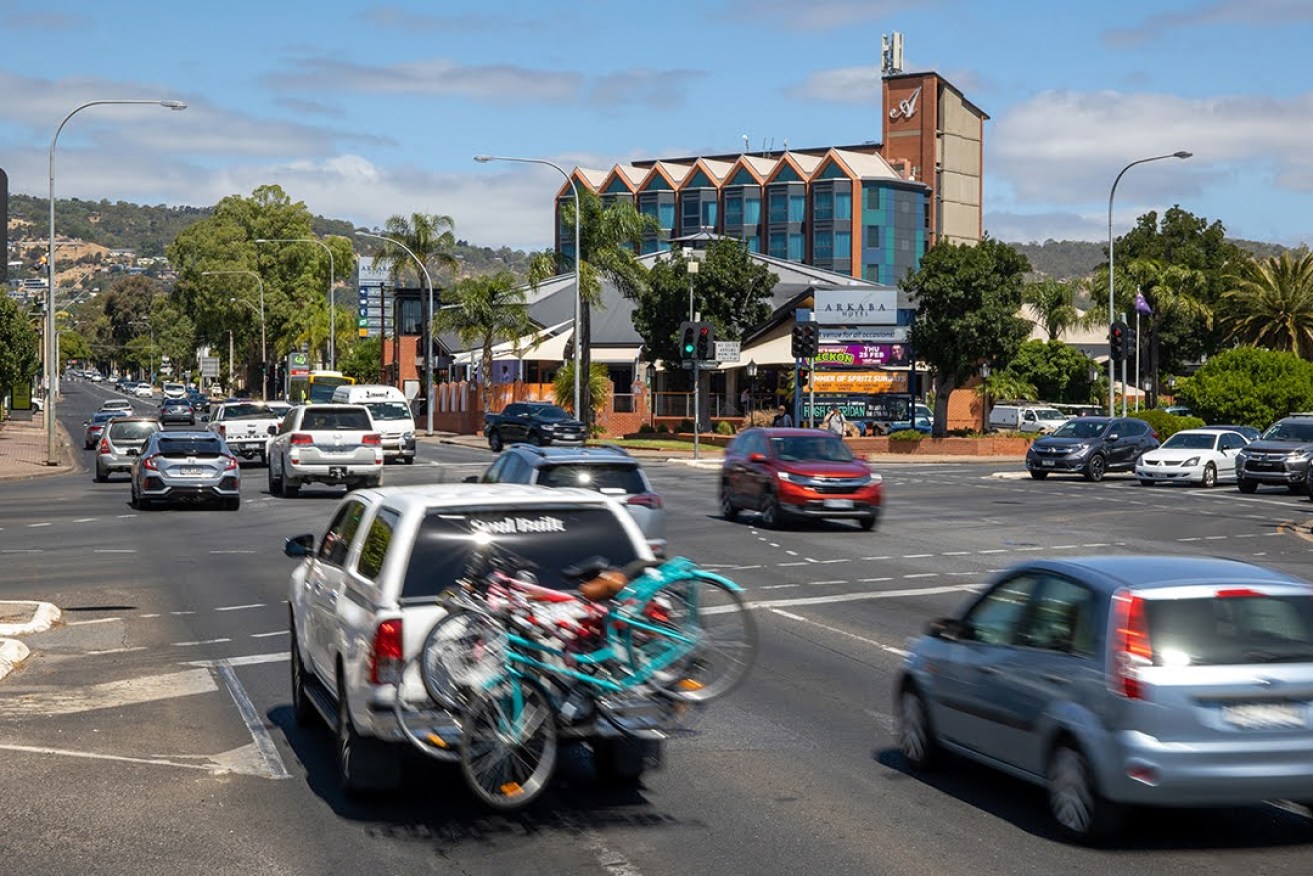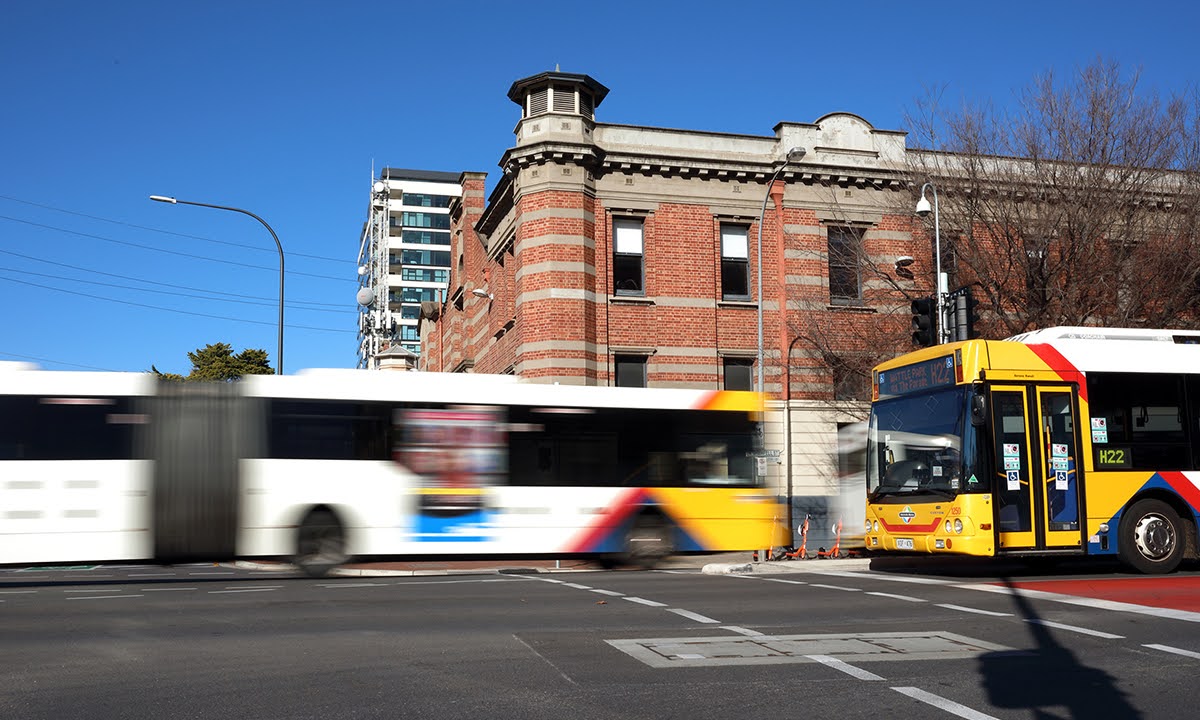New lobby group wants to transform transport policy in SA
A coalition of researchers and community groups has launched a campaign for a new transport plan for South Australia, featuring high-quality public transport including regional rail and better infrastructure for cyclists and pedestrians.


The most annoying traffic offences have been revealed by an RAA poll of more than 5500 motorists.
The Transport Action Network has been formed to push the State Government to “co-produce” an integrated transport and land use plan with the community, with the group decrying a lack of well-informed discussion about the future of transport in the state.
Significantly, they want the Federal Government to fund transport projects based on this new plan and an independent assessment of each project. In a move that would channel funds away from mega-roads and towards a more diverse range of transport programs, the independent assessment would include social, environmental and health criteria.
Spokesperson Jennifer Bonham, who is involved as a private citizen but has interests in the area as a UniSA transport researcher and Unley councillor, said the group grew out of concern about so-called “congestion-busting” intersection projects in the suburbs and has grown from there.
She said these projects, such as the widening of the Fullarton Road/Glen Osmond Road intersection, indicated a narrow view in government about transport, with huge investment in increasing road capacity freezing out spending on public transport and infrastructure for active transport such as cycling and walking.
While she believed the congestion easing effects of the road widening projects would be shortlived, increased investment in public and active transport would have a lasting impact on arterial roads.
“There’s not enough space to keep shoving cars onto those arterial roads,” she told InDaily.
“It (huge investment on road projects) sends a clear message that we’re prepared to invest in this form of transport but nothing else.”
Other members of the network include planning experts, representatives of Walking SA and Bike Adelaide, local transport action groups and People for Public Transport.
The network has produced a paper, Creating Transport Choices: A Call to Action. which argues that transport and land use decision-making in South Australia for the past 70 years has prioritised private motor vehicle travel and road freight transport at the expense of the community.
“This emphasis has left South Australians with little choice but to use a car to access everyday destinations and share their frequently congested roads and neighbourhoods with heavy freight vehicles,” the network argues.
“This approach is exacting a high price not only for personal and state budgets but also in terms of individual and environmental health social well-being , and the livability of our towns and cities. It is time to go beyond the election cycle and bring the community into a conversation about a long-term sustainable transport future.”
South Australians have not been engaged in a deep, well-informed discussion about their transport future.
The network wants to see data collection improved, as it currently focuses on motor vehicle traffic volumes on major roads and public transport boarding, without any regard for how many people walk, cycle, skate or scooter to destinations.
“This failure means transport decision making is fundamentally biased. Decision-makers continue to facilitate some trips while discouraging or ignoring people who cannot or prefer not to drive.”
The network wants “genuine transport choice” for all South Australians, which means safer infrastructure for people who walk, cycle, scoot or skate, and higher quality public transport which is frequent, reliable and comfortable.
A comprehensive regional passenger and freight rail network is required, the network argues, to connect emerging population centres and established townships with Adelaide.
The group specifically mentions the need for a fast train to Mt Barker or even Murray Bridge, and a greater network of right-of-way routes for light rail and buses.
South Australia last produced an integrated transport and land use plan under the Weatherill Government in 2013.
Many of that plan’s ambitions were never realised, particularly an extension of the tram network to Henley Square, The Parade, Prospect and Unley roads, the airport, West Lakes, Outer Harbor and Grange. It also included a plan to move interstate rail into the Adelaide Railway Station from Keswick.
The O-Bahn tunnel, mentioned in the plan, was built, despite some opposition.

The new transport lobby group wants more right-of-way for public transport buses in Adelaide.
The Transport Action Network wants all funding for SA transport infrastructure to be based on the objectives of a new plan.
“Transport spending is ad hoc and focused on road building and road widening projects rather than efficient and convenient movement of people and goods,” the network says in its paper.
“These road projects are not in keeping with good land use planning and operate to reinforce an unsustainable status quo. South Australia has no plan for decarbonising the transport sector and no plan to provide the full range of transport infrastructure and services required to meet the independent travel needs of a diverse and growing population.
“South Australians have not been engaged in a deep, well-informed discussion about their transport future. Transport planning and decision making is opaque and lacks accountability with individual transport projects being presented to local communities once decisions have been taken and designs completed.”
Minister for Transport and Infrastructure Tom Koutsantonis told InDaily there would be a new 30-year Plan for Greater Adelaide – a planning document first produced in 2010 and updated in 2017 – but stopped short of committing to an integrated transport and land use plan.
“A Malinauskas Labor Government is committed to planning for the future of Adelaide, and that includes the creation and implementation of a new ’30-year-plan’,” he said in a statement.
“Public infrastructure is a critical part of future-proofing our city, and ensuring Adelaide continues to be one of the most liveable cities in the world.
“Roads and transport will play a key role in that plan, and we will continue to consult with the community in its delivery.”
Meanwhile, Greens MLC Robert Simms is seeking to establish a wide-ranging parliamentary inquiry into the quality of public transport in South Australia and the role of government in “enabling and encouraging active transport”. He also wants to look at the role of e-scooters in the transport system.
“We do need to have a re-set around transport policy in South Australia,” he told InDaily.
“Active transport hasn’t been invested in by either side of politics.”
He said the city’s long-delayed east-west bikeway was indicative of the failure of all levels of government to create active transport infrastructure in the state.
“It’s that old saying – ‘build it and they will come’. If we invest in it and make these options attractive, there will be increased use.”




